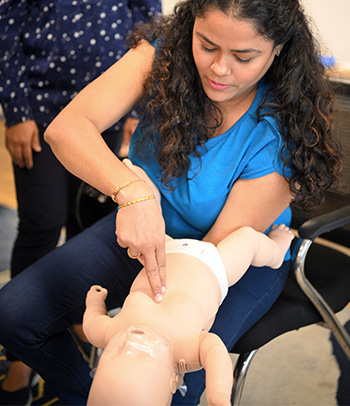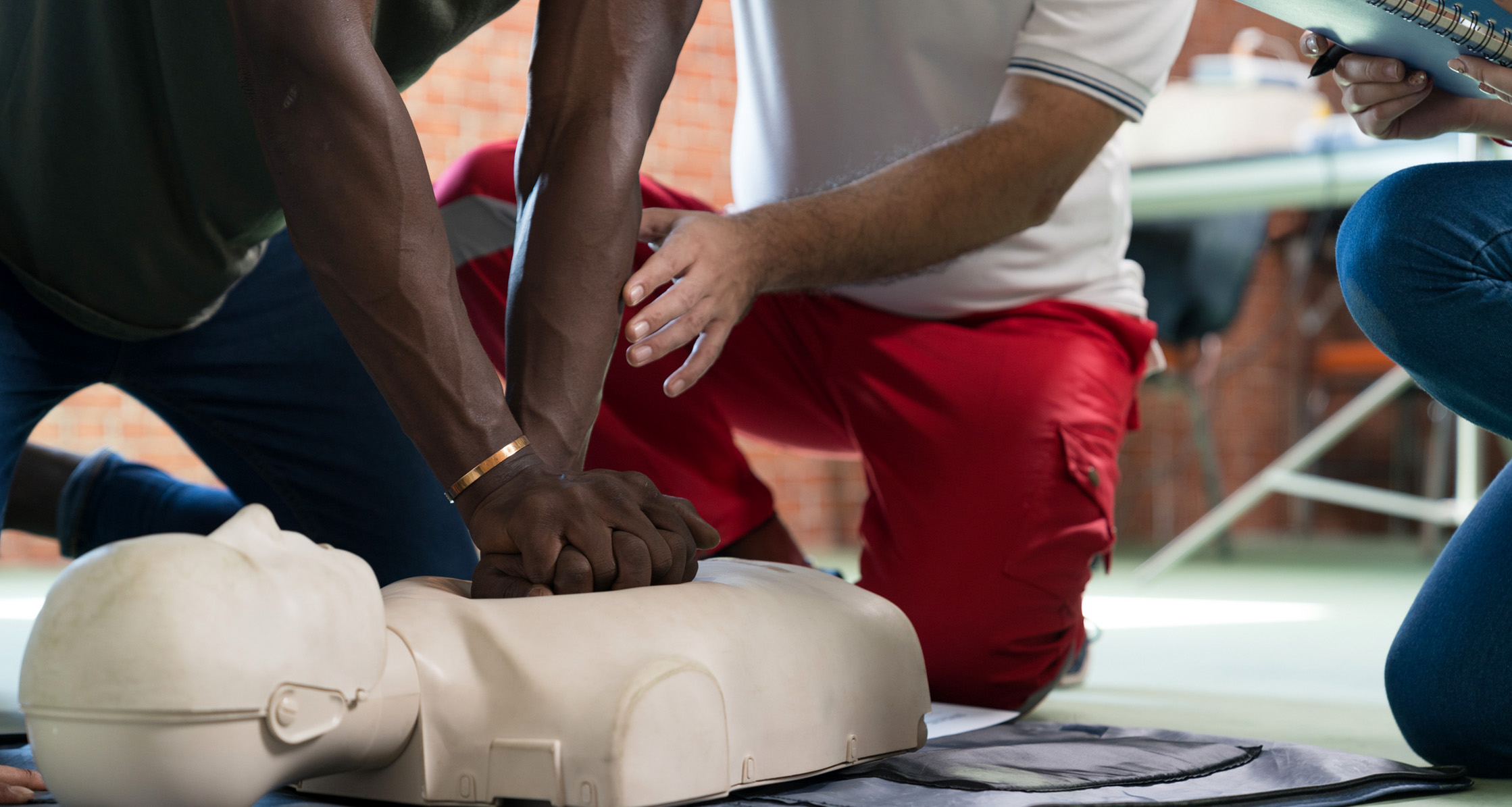If CPR is performed in the first few minutes of cardiac arrest, it can double or triple a person’s chance of survival.
None of us know when or if we’ll find ourselves in an emergency. An emergency may occur in your own home, while visiting a loved one or while you’re walking down the street next to a complete stranger. If an emergency occurs, will you be ready to help?
As a member of the military, you were trained to be ready for emergencies. You knew the importance of being prepared and you received the training to support you. But as a Veteran and a civilian, you may still face emergencies where your actions could save lives. Bystanders and family members are often the first ones to respond to an emergency, but according to research from the Centers for Disease Control and Prevention (CDC), many people hesitate to do life-saving techniques like cardiopulmonary resuscitation (CPR) because they mistrust their abilities or fear injuring the victim.
Knowing the basics of CPR – an emergency lifesaving procedure performed when the heart stops beating – is an important way to ensure you’re able to help in emergencies. Check out the information below to learn more about hands-only CPR and what steps you can take to ensure you’re prepared if an emergency occurs.
Why Is Knowing CPR Important?
The short answer to this question is that CPR saves lives. But here are some additional things to consider:
- CPR can keep someone in stable condition until trained medical personnel arrive.
- According to the CDC, more than 350,000 people experience cardiac arrest outside of the hospital each year and about 60-80% of them die. If CPR is performed in the first few minutes of cardiac arrest, it can double or triple a person’s chance of survival.
- CPR can keep oxygen-rich blood flowing to the brain and other vital organs, giving the victim a better chance at a full recovery. A lack of oxygen-rich blood when the heart stops can cause brain damage in only a few minutes.
When Would I Need to Use CPR?
There are several instances when knowing CPR may be helpful. If someone is unresponsive, even if you shake or shout at them, or if a person isn’t breathing or is only gasping for air, CPR can help save them. Situations where CPR may be necessary include:
- Near drownings
- Accidents
- Heart attacks
- Suffocation
- Drug overdoses
- Smoke inhalation
What Steps Should I Take as a Bystander During a Cardiac Emergency?
As a bystander, you can take important action. You don’t need a special certification or formal training to help. Remember, keeping the blood flow active for a victim of cardiac arrest – even partially – extends the opportunity for a successful resuscitation once trained medical staff arrive on site. According to the American Heart Association, here are some steps to know and follow:
- Call 911 right away. If there’s someone else nearby, ask that person to call so you can start hands-only CPR.
- Begin hands-only CPR. Once you’ve established that a person is unresponsive, you can begin hands-only CPR, which does not include breathing into the person’s mouth. The emphasis is on chest compressions only.
- Push hard and fast at the center of the victim’s chest.
- Attempt to give between 100-120 compressions or pushes a minute. The American Heart Association lists several songs you can use to help find the right rhythm for your chest compressions.
- Learn more about where to position your hands, how to position yourself over the victim, how to determine if someone is unresponsive, and more by checking out this hands-only CPR video from the Department of Veterans Affairs (VA) and the American Red Cross.
- Give hands-only CPR until medical professionals arrive or until someone with formal training can take over.
If you’re in a public place, you or another bystander can also look for an automated external defibrillator (AED). All states have laws or regulations requiring them in public gathering places. The AED is equipped to give you verbal instructions to walk you through use.
The American Heart Association has a lot of additional resources related to hands-only CPR, including a fact sheet with instructions on hands-only CPR and hands-only CPR instructional videos. Hands-only CPR has been shown to be as effective in the first few minutes as conventional CPR for cardiac arrest at home, at work or in public.
Remember, using hands-only CPR is not the same as being trained in conventional CPR. To become trained in CPR or first aid, check out the resources below.
Where Can I Get More Information or Training?
If you’re interested in taking a course to learn full CPR, you can take one online or find a training center near you. Check out these resources.
- The American Red Cross has a course finder tool to search your local area. You may be able to get a discount as a Veteran or free training if you’re a volunteer.
- The American Heart Association also offers a course finder tool to help you find an online or in-person CPR course.
- VA’s Caregiver Support Program offers comprehensive CPR training videos as well as in-person training to support caregivers who want to learn crucial life-saving skills. Contact your local Caregiver Support Program to inquire about training in your area.
- The links above can also help you find first aid training courses. Basic first aid training will include skills like managing common injuries or wounds, stopping a wound from bleeding, learning the Heimlich maneuver for choking and more.
- MedlinePlus offers information and additional resources related to CPR and other first aid topics, including first aid kits, choking, nosebleeds and more.
Take the steps you need to become confident to help in emergencies!







